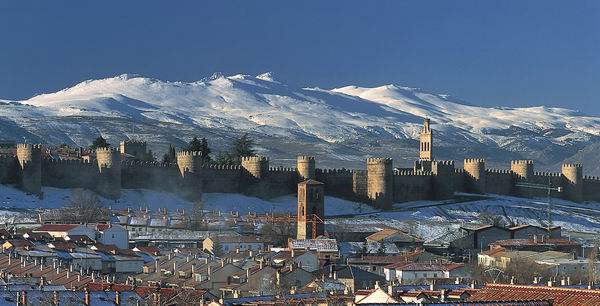
Ávila is a medieval town of heritage, history, art and gastronomy. Founded on three cultures, the city walls, houses, palaces, churches and convents make up the town's complex artistic heritage. The image of the mediaeval town comes from its fortified city walls, which are much more than a mere symbol in Ávila; they are the monument that defines the town and how it is laid out.
Ávila reached its maximum splendour in the 16th century as a town of mysticism and spirituality, epitomised by Teresa de Cepeda y Ahumada, or more commonly known as St Teresa of Ávila. If one follows the Route of Teresa, you will travel from the Gothic style through to the Renaissance, as Ávila’s most universal saint lived halfway between both periods. Saint Teresa and also San Juan de la Cruz brought the Spanish language to one of its highest levels through their poetry and writings on mysticism.
Most of Ávila’s festivities and traditions are religious, but they also have a pagan side. Religion is joined by other leisure activities that are based on the town's multi-racial customs and traditions. Each quarter of the town has its own festival in remembrance of the divisions that existed in the past when each of the groups who went to repopulate the town settled around a parish church.
Ávila became a World Heritage Site in 1985 and has formed part of the Spanish Jewish Quarter Network since 2005. This heritage requires an unhurried visit at different times of the day and, if possible, with the help of a good guide to understand the ancient town, the mediaeval town, the Renaissance town and the recovery it underwent in the 19th century. Few cities in the world can offer so much in such a small area. As in many Spanish mediaeval cities, Ávila was home to Jews, Muslims and Christians. They all left their mark and form part of the town's cultural legacy. The city's history across the years was marked by many people, some of whom were Hebrew and Muslim writers, such as Abraham Nissim Ben, Hebrew author of El Libro de la Sabiduría, Mose de León, author of La Rosa del Testimonio and Esplendor during the thirteenth century and considered the most important book of Jewish mystical writings, and the named Mancebo de Arévalo, Arab author of Tafçira, a journal on his experiences with Muslim traditions and one of the last pieces of spiritual writing on Spanish Islam.

Besides the archaeological evidence that suggests an original wall from the late-antiquity period (fifth century), set around a small area, the walls standing today date from the Middle Ages. With a perimeter of 2516 m (around an area of 33 hectares), 87 turrets, 9 gates and 2 small gates and 2500 merlons, the walls of Ávila are the best-conserved example of their kind in the world. Palaces built on the inside formed a second line of defence against popular revolts and/or enemy attacks on the town. However the date of their construction is a matter of controversy. Some suggest that, in keeping with tradition, they were built at the end of the 11th century, while others consider that most of the construction work took place during the second half of the 12th century-beginning of the 13th century, as is the case of neighbouring military constructions. Built on rock foundations, the walls stand as a powerful defence entirely made of granite masonry, filled with stone and mortar. It has an irregular quadrilateral shape that is almost a rectangle and positioned longitudinally from East to West. Its construction began on the most vulnerable side (the east), where there are no natural elements of defence, which is why it is the most robust and grandiose side of the walls. The walls have a thickness of 3 m and a height of 12 m. There is a semi-circular turret every 20 m, standing 8 m above the height of the walls and this side has the largest and most solid gates. The gates on the north and west sides are less majestic and the turrets show signs of work by Mudejar builders (brickwork). The south side gives the impression of depletion and the size of the masonry work decreases. It has smaller semi-cylindrical towers set further apart and gives an overall sensation of reduced resistance and robustness. 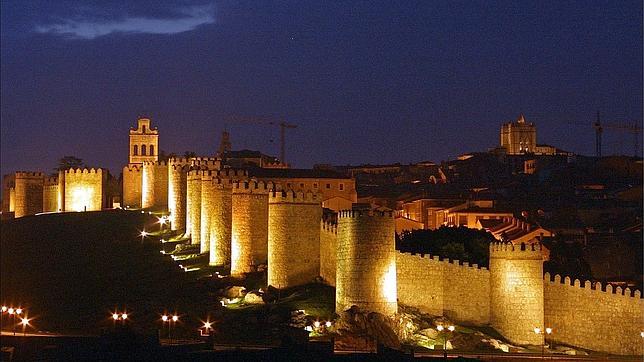 The east side has a large amount of reused Roman materials (altar stones, urns, cornices, animal statues and columns, etc.) thought to come from the dismantling of an early Roman necropolis that was once located in the area. In the 16th century, it was still used for economic control and health safety purposes and restorations were carried out to repair the walls; however, after the danger of war had disappeared, the decision was taken to remove some of the additional defence items (barbicans, moats, etc.), which had become ineffective against the military machines used at the time. The repair and restoration work before their designation as a National Monument on 24 March 1884 was of a sporadic nature. However, two events led to it being used again for defence purposes: the French occupation (1809-1812) and the Carlist wars (1836-1840). The work carried out later was supervised by the state and focused on the maintenance, restoration and artistic conservation of the walls as national heritage to favour their function as one of the city's sites of interest. At the end of the 19th century, certain intellectual circles advocated the demolition of the walls in keeping with what was happening in other European cities as they were considered a barrier to urban development. The Town Hall's insistence and the lack of finance for the demolition work prevented their ideas from being put into practice, fortunately in those days you couldn’t spend money you didn’t have, a lesson that many Town Hall’s could learn nowadays!
The east side has a large amount of reused Roman materials (altar stones, urns, cornices, animal statues and columns, etc.) thought to come from the dismantling of an early Roman necropolis that was once located in the area. In the 16th century, it was still used for economic control and health safety purposes and restorations were carried out to repair the walls; however, after the danger of war had disappeared, the decision was taken to remove some of the additional defence items (barbicans, moats, etc.), which had become ineffective against the military machines used at the time. The repair and restoration work before their designation as a National Monument on 24 March 1884 was of a sporadic nature. However, two events led to it being used again for defence purposes: the French occupation (1809-1812) and the Carlist wars (1836-1840). The work carried out later was supervised by the state and focused on the maintenance, restoration and artistic conservation of the walls as national heritage to favour their function as one of the city's sites of interest. At the end of the 19th century, certain intellectual circles advocated the demolition of the walls in keeping with what was happening in other European cities as they were considered a barrier to urban development. The Town Hall's insistence and the lack of finance for the demolition work prevented their ideas from being put into practice, fortunately in those days you couldn’t spend money you didn’t have, a lesson that many Town Hall’s could learn nowadays!

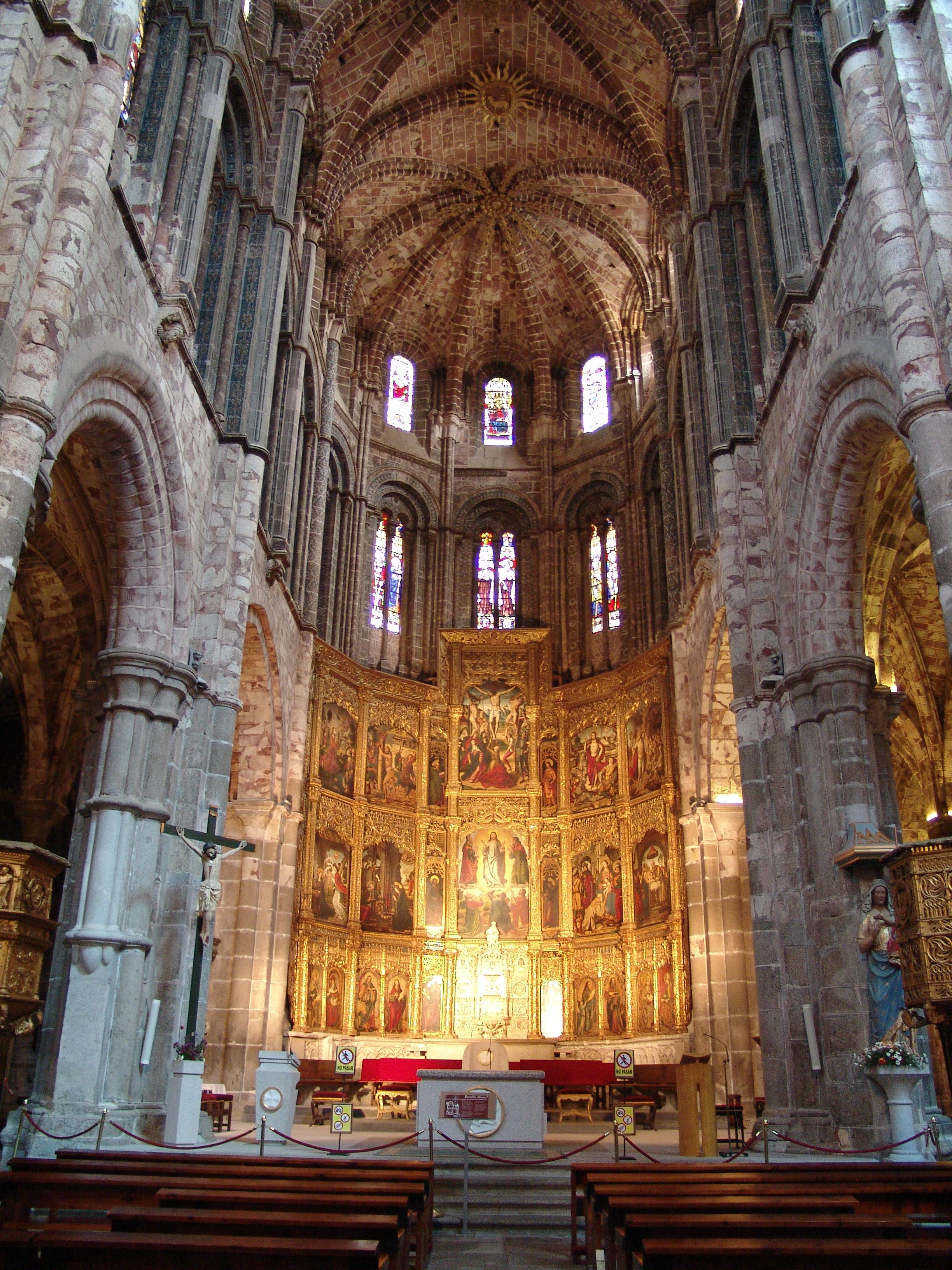
Ávila’s Cathedral stands as both church and fortress and its apse, known locally as the “cimorro” and set in the walls, is the most imposing turret of the east wall. Considered the first Gothic cathedral in Spain, it stands on the remains of an original building that was devoted to El Salvador (The Saviour). In 1172, Alfonso VIII decided to extend the original building and commissioned the project to the French master builder, Fruchel. He was ordered to begin the construction of the current building in transitional Romanesque-Gothic style and took part in the construction of the Caleno granite apse (or cimorro), the ambulatory (which has conserved the original Romanesque windows), the first body of the transept and the foundations of the Caleno granite walls. 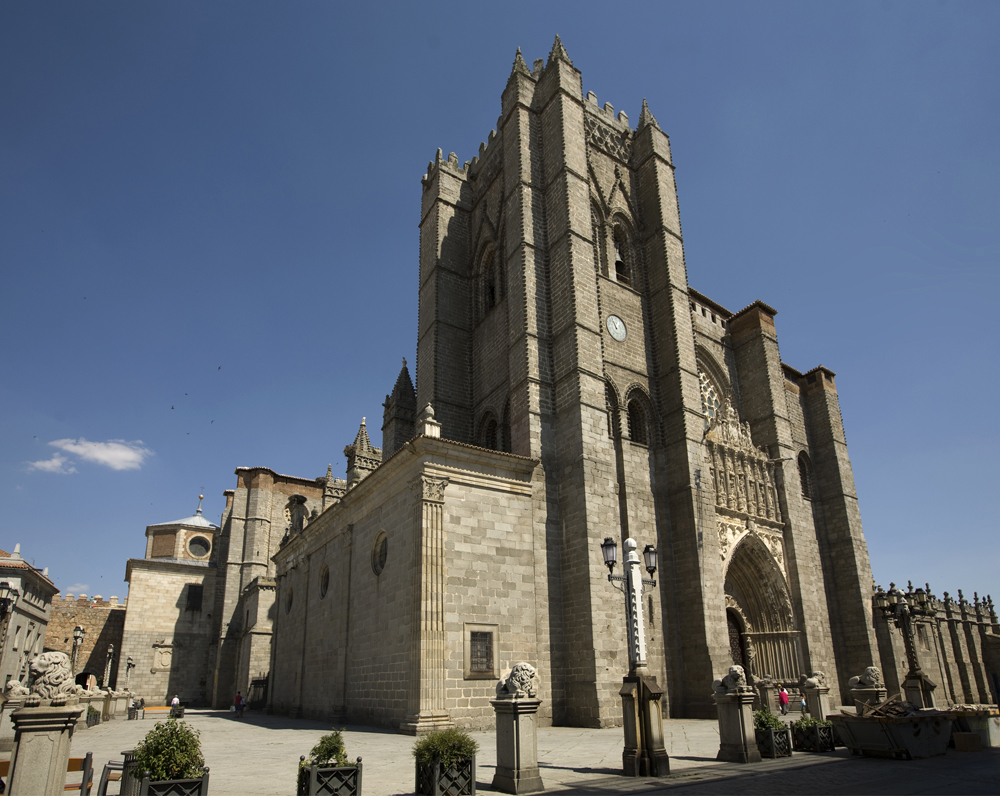
After his death, a second stage of construction brought in new materials and the use of granite ashlars; the project continued in Gothic style. The building is of a clearly defined Burgundian style and stands on a Latin-cross layout made up of three naves, a transept and a semi-circular upper end with a double ambulatory and chapels set between the buttresses. It is flanked at the bottom end by two square-shaped towers (the one on the right is unfinished and the one on the left has been finished off with merlons and narrow windows) and covered by a groined vault. Some of the cathedral’s stained-glass windows were damaged during the Lisbon earthquake in 1755 and had to be replaced. The first body of the towers and the naves date from the 13th century and the second body of the towers, the cloister (finished in the 16th century) and the vaults and flying buttresses date from the 14th century. The roof as it is today was laid on top of the original granite roof in 1578 after the sidewalls had been built in brick. The work was completed at the end of the 16th century / beginning of the 17th century with the addition of a few chapels.
The 'Gastronomical Triad' of the town is made up of Judías del Barco (large haricot beans from the village of El Barco de Ávila, also known locally as 'pipos'), Chuletón de Ávila (veal chop from 500 g to 1 kg in weight, depending on your appetite!) and Yemas de Santa Teresa (sweet cakes made from egg yolks and sugar). A delight for any palate especially the Chuletón if you are a meat lover!
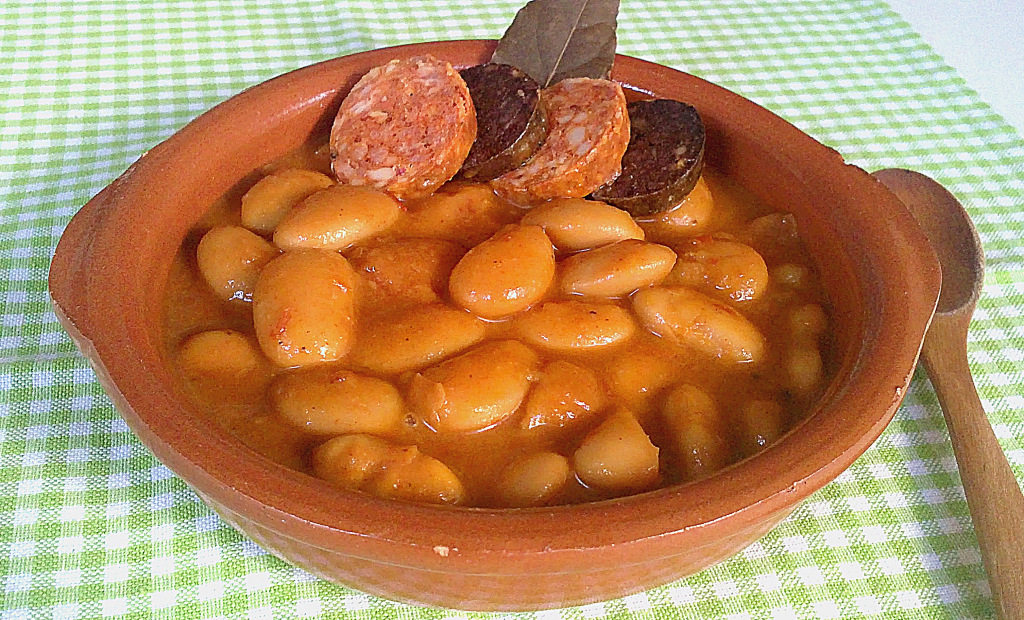
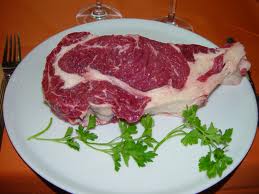

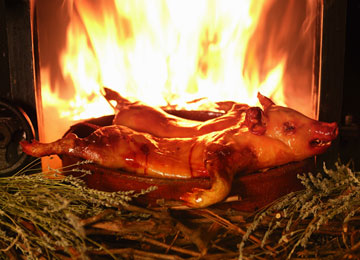
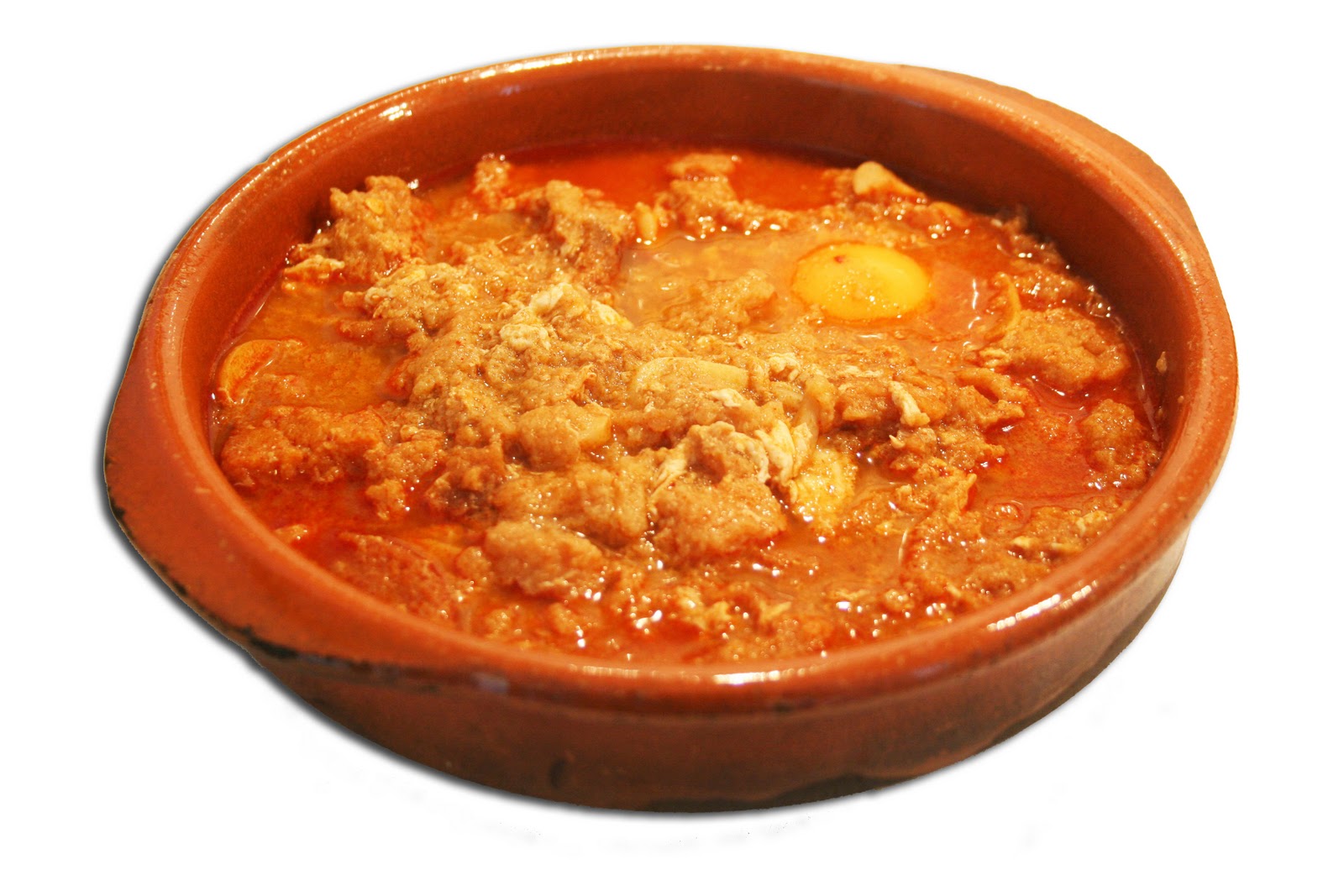

This type of menu is a true example of Ávila gastronomy, based on agricultural and cattle-farming products from a province that varies greatly in both geography and climate. Pulses and legumes have earned their fame thanks to the haricot bean from El Barco and the Carilla (a small haricot bean with a black dot) from the banks of the River Tormes and the chickpea from La Moraña in the north of the province. Meat is also popular: kid from Candeleda, lamb from the Amblés Valley and roast suckling pig from the north of the province, which personally if one of my favourites, succulent and bursting with flavour.
The way the food is cooked is very simple and rustic with no sauces or extravagance; the importance is given to the quality of the product itself to ensure that it provides original flavours without the need for enhancements.
But that’s lunch, and there is an appetiser that is a must for anyone visiting the walled city: its tapas or, as they say locally, 'ir de pinchos'. In Ávila, when you ask for a drink, you are given a small dish with all kinds of delicacies. From classic tripe, not for me but though, sweetbreads or the ever-present Spanish omelette to small bread rolls and tuna fish pasties, etc., a great opportunity for tasting small portions of all kinds of local food.
Other authentic dishes from the region would be tasty garlic or Castilian soup, with the characteristic flavour of paprika from the village of Candeleda or pork meats that are conserved in jars of olive oil in which they have first been fried, known locally as pork loin or chorizo sausage 'de olla', now that is spectacular but not so good for he cholesterol, but once in while it won’t hurt.
As already mentioned, the roast meats come from local breeds (such as Designation-of-Origin veal, or kid and suckling pig, which have their own designation). However, the classic way of enjoying suckling pig in Ávila is fried and refried in small pieces, known locally as “cuchifrito”. So if you like crispy bacon, this will blow you away.
If you prefer fish, you can enjoy the famous fried, baked or pickled trout. And as Ávila is an inland town of Catholic tradition, cod is cooked in a variety of excellent dishes: in batter, with garlic and paprika or in a red pepper sauce.
As always it is important to accompany the food with local wines, which also follow the maxim of simplicity and taste. They are full-bodied and big on the palate and come from the area around the River Alberche. Sweet and fruity, they are especially enjoyed as sangria during Holy Week in Ávila. There are also liqueurs of different tastes and bouquets, such as orujo, a strong liquor made from what is left of the grapes after they have been pressed to make wine.

The healthiest dessert is fruit and should be enjoyed in season: peaches from Burgohondo, Reineta apples from El Barco de Ávila, cherries from the Tiétar Valley and figs from Poyales are just a few examples. And for sweet-toothed visitors, besides the famous yemas, there are many other traditional sweets, such as mantecados, perrunillas, amarguillos, jesuitas, empiñonados and torrijas, etc., which are not hard to find as the town is peppered with cake shops. Ávila is a city that is well worth a visit so if you happen to be passing by, stop off, you won’t be disappointed.
Ver mapa más grande